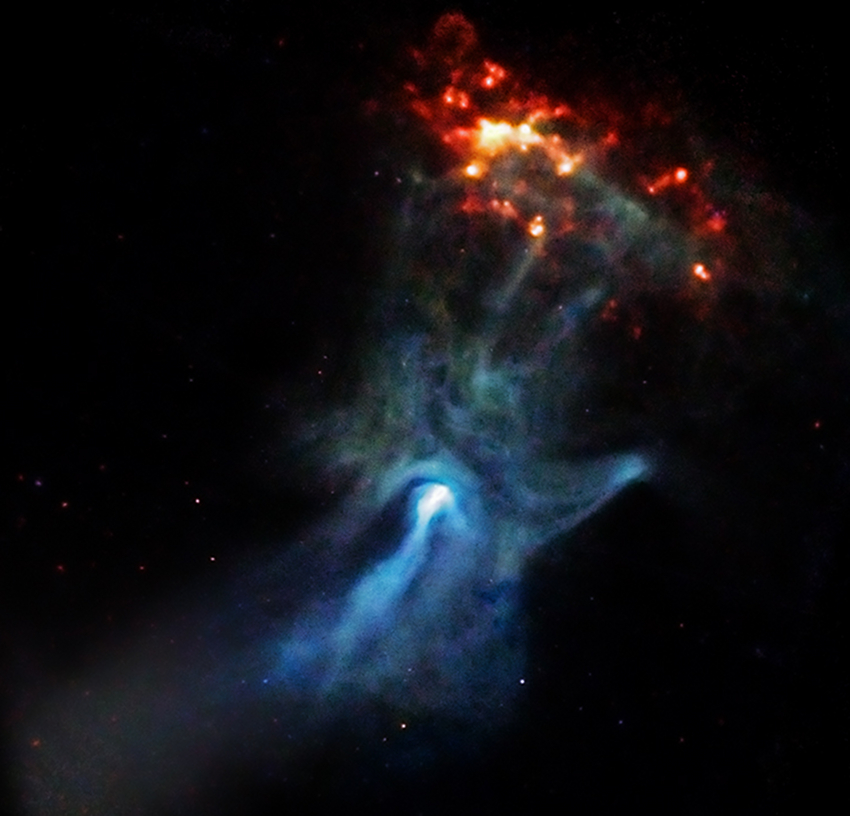
 Credit: NASA/CXC/SAO/P.Slane, et al.
Credit: NASA/CXC/SAO/P.Slane, et al.
What's Tickling RCW 89?
The image above is a famous view of the bright X-ray nebula around a highly magnetized pulsar named PSR B1509-58, obtained by the Chandra X-ray Observatory. The pulsar itself is the bright point of X-ray emission towards the bottom of the image, and has a noticeable "tail" or jet of X-ray emitting material extending below it. This pulsar, a chunk of about a sun's worth of material squeezed down to the diameter of the DC beltway, spins seven times every second and gives energy to its surroundings, in a similar manner to the better known Crab Nebula. The exchange of energy from the pulsar to its environment generates noticeable, ghostly fingers of X-rays extending more than 50 light-years into space. At the tips of these fingers lies a gas cloud known to astronomers as RCW 89. The apparently strong interaction between the pulsar-powered fingers and the cool gas in RCW 89 helps light up knots in RCW 89 and makes them glow in X-rays as well. Detailed study of the X-ray emitting knots in RCW 89 suggests a circular pattern in the temperature of the knots, which might be caused by the precession of the spin axis of the pulsar.
Published: June 13, 2011
<
HEA Dictionary ● Archive
● Search HEAPOW
● Other Languages
● HEAPOW on Facebook
● Download all Images
● Education ● HEAD
>

Each week the HEASARC
brings you new, exciting and beautiful images from X-ray and Gamma ray
astronomy. Check back each week and be sure to check out the HEAPOW archive!
Page Author: Dr. Michael F. Corcoran
Last modified Monday, 26-Feb-2024 17:46:35 EST


